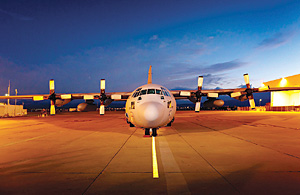INDIAN ARMED FORCES CHIEFS ON OUR RELENTLESS AND FOCUSED PUBLISHING EFFORTS

The insightful articles, inspiring narrations and analytical perspectives presented by the Editorial Team, establish an alluring connect with the reader. My compliments and best wishes to SP Guide Publications.

"Over the past 60 years, the growth of SP Guide Publications has mirrored the rising stature of Indian Navy. Its well-researched and informative magazines on Defence and Aerospace sector have served to shape an educated opinion of our military personnel, policy makers and the public alike. I wish SP's Publication team continued success, fair winds and following seas in all future endeavour!"

Since, its inception in 1964, SP Guide Publications has consistently demonstrated commitment to high-quality journalism in the aerospace and defence sectors, earning a well-deserved reputation as Asia's largest media house in this domain. I wish SP Guide Publications continued success in its pursuit of excellence.
- Indian Air Force Aims for Full Indigenous Inventory by 2047 — Air Chief Marshal A.P. Singh
- General Upendra Dwivedi takes over as the Chief of the Army Staff
- Rajnath Singh assumes charge as Defence Minister for the second consecutive term
- Admiral Dinesh K. Tripathi assumes Command of the Indian Navy as 26th Chief of the Naval Staff
- Prime Minister witnesses 'Bharat Shakti' – a Tri-Services Firing and Manoeuvre Exercise in Pokhran, Rajasthan
Boeing delivers first C-130 AMP aircraft modified by Warner

Boeing and Warner Robins Air Logistics Center has delivered the first C-130 avionics modernisation programme (AMP) aircraft modified by Warner Robins. The aircraft is the fourth to be delivered to Little Rock Air Force Base, Arkansas; the first three were modified by Boeing.
The C-130 AMP cockpit upgrade simplifies and standardises the multiple C-130 configurations operated by the US Air Force.
“This is the first of the US Air Force C-130 AMP aircraft we will deliver to the warfighter, and we are proud of the product,” said John Adams, Chief, Tactical Airlift Division, Robins Air Force Base.
The aircraft is one of five that will participate in initial operational testing and evaluation (IOT&E) at Little Rock Air Force Base beginning later this month. The second low rate initial production aircraft at Warner Robins – scheduled for delivery in February – will be the fifth aircraft in the IOT&E fleet.
“Boeing is excited to see this upgrade become a reality for America’s armed forces,” said Mahesh Reddy, Boeing C-130 AMP Programme Director. “C-130 AMP will standardise the C-130H fleet and reduce annual ownership cost while offering the crews more situational awareness to perform their missions.”





